Haibin Ling
Robust Domain Adaptive Object Detection with Unified Multi-Granularity Alignment
Jan 01, 2023



Abstract:Domain adaptive detection aims to improve the generalization of detectors on target domain. To reduce discrepancy in feature distributions between two domains, recent approaches achieve domain adaption through feature alignment in different granularities via adversarial learning. However, they neglect the relationship between multiple granularities and different features in alignment, degrading detection. Addressing this, we introduce a unified multi-granularity alignment (MGA)-based detection framework for domain-invariant feature learning. The key is to encode the dependencies across different granularities including pixel-, instance-, and category-levels simultaneously to align two domains. Specifically, based on pixel-level features, we first develop an omni-scale gated fusion (OSGF) module to aggregate discriminative representations of instances with scale-aware convolutions, leading to robust multi-scale detection. Besides, we introduce multi-granularity discriminators to identify where, either source or target domains, different granularities of samples come from. Note that, MGA not only leverages instance discriminability in different categories but also exploits category consistency between two domains for detection. Furthermore, we present an adaptive exponential moving average (AEMA) strategy that explores model assessments for model update to improve pseudo labels and alleviate local misalignment problem, boosting detection robustness. Extensive experiments on multiple domain adaption scenarios validate the superiority of MGA over other approaches on FCOS and Faster R-CNN detectors. Code will be released at https://github.com/tiankongzhang/MGA.
Backdoor Cleansing with Unlabeled Data
Nov 23, 2022



Abstract:Due to the increasing computational demand of Deep Neural Networks (DNNs), companies and organizations have begun to outsource the training process. However, the externally trained DNNs can potentially be backdoor attacked. It is crucial to defend against such attacks, i.e., to postprocess a suspicious model so that its backdoor behavior is mitigated while its normal prediction power on clean inputs remain uncompromised. To remove the abnormal backdoor behavior, existing methods mostly rely on additional labeled clean samples. However, such requirement may be unrealistic as the training data are often unavailable to end users. In this paper, we investigate the possibility of circumventing such barrier. We propose a novel defense method that does not require training labels. Through a carefully designed layer-wise weight re-initialization and knowledge distillation, our method can effectively cleanse backdoor behaviors of a suspicious network with negligible compromise in its normal behavior. In experiments, we show that our method, trained without labels, is on-par with state-of-the-art defense methods trained using labels. We also observe promising defense results even on out-of-distribution data. This makes our method very practical.
Local Context-Aware Active Domain Adaptation
Aug 26, 2022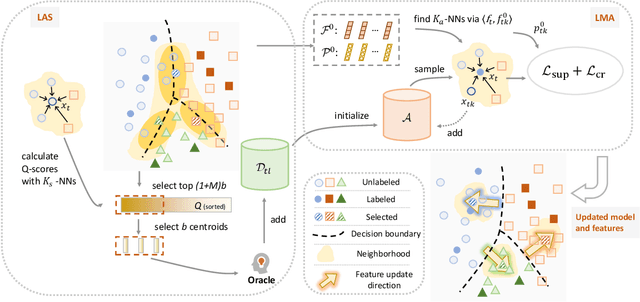
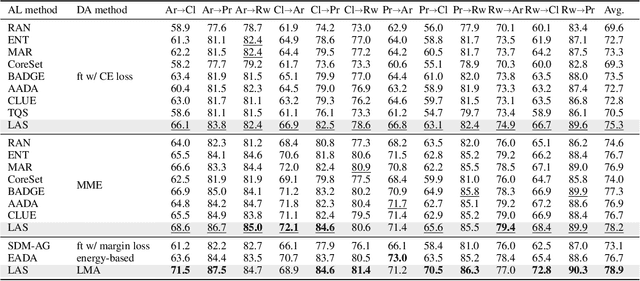
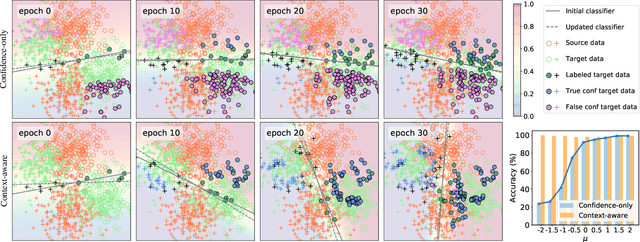
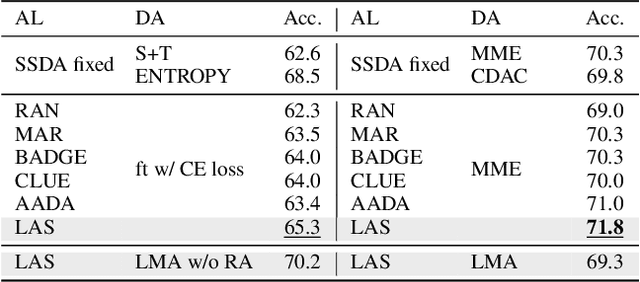
Abstract:Active Domain Adaptation (ADA) queries the label of selected target samples to help adapting a model from a related source domain to a target domain. It has attracted increasing attention recently due to its promising performance with minimal labeling cost. Nevertheless, existing ADA methods have not fully exploited the local context of queried data, which is important to ADA, especially when the domain gap is large. In this paper, we propose a novel framework of Local context-aware Active Domain Adaptation (LADA), which is composed of two key modules. The Local context-aware Active Selection (LAS) module selects target samples whose class probability predictions are inconsistent with their neighbors. The Local context-aware Model Adaptation (LMA) module refines a model with both queried samples and their expanded neighbors, regularized by a context-preserving loss. Extensive experiments show that LAS selects more informative samples than existing active selection strategies. Furthermore, equipped with LMA, the full LADA method outperforms state-of-the-art ADA solutions on various benchmarks. Code is available at https://github.com/tsun/LADA.
Domain Adaptation with Adversarial Training on Penultimate Activations
Aug 26, 2022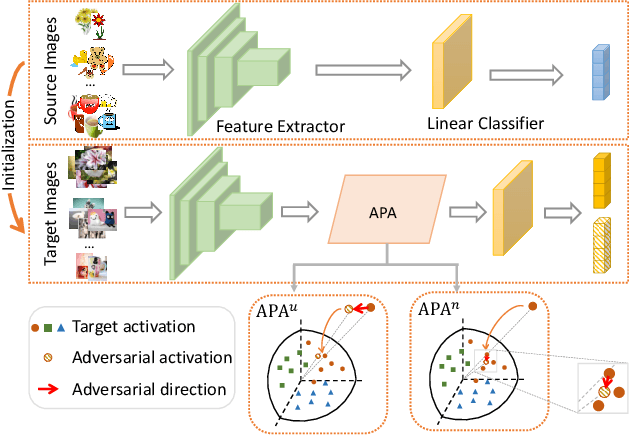
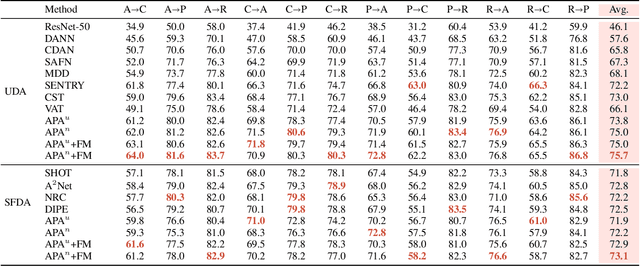
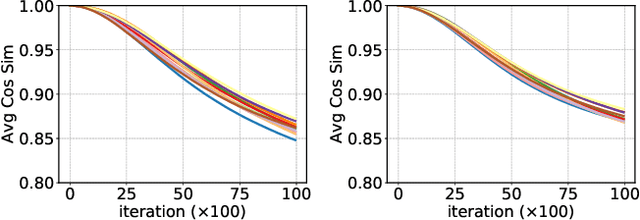
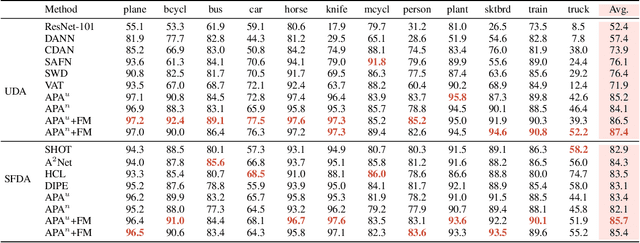
Abstract:Enhancing model prediction confidence on unlabeled target data is an important objective in Unsupervised Domain Adaptation (UDA). In this paper, we explore adversarial training on penultimate activations, ie, input features of the final linear classification layer. We show that this strategy is more efficient and better correlated with the objective of boosting prediction confidence than adversarial training on input images or intermediate features, as used in previous works. Furthermore, with activation normalization commonly used in domain adaptation to reduce domain gap, we derive two variants and systematically analyze the effects of normalization on our adversarial training. This is illustrated both in theory and through empirical analysis on real adaptation tasks. Extensive experiments are conducted on popular UDA benchmarks under both standard setting and source-data free setting. The results validate that our method achieves the best scores against previous arts.
Attention Hijacking in Trojan Transformers
Aug 09, 2022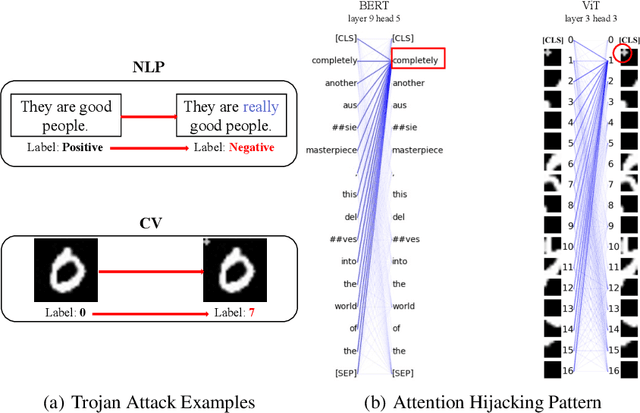
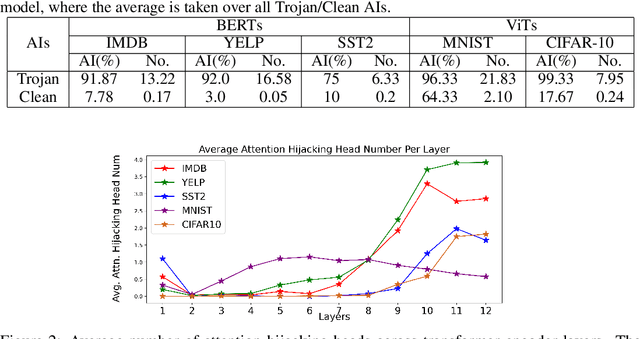


Abstract:Trojan attacks pose a severe threat to AI systems. Recent works on Transformer models received explosive popularity and the self-attentions are now indisputable. This raises a central question: Can we reveal the Trojans through attention mechanisms in BERTs and ViTs? In this paper, we investigate the attention hijacking pattern in Trojan AIs, \ie, the trigger token ``kidnaps'' the attention weights when a specific trigger is present. We observe the consistent attention hijacking pattern in Trojan Transformers from both Natural Language Processing (NLP) and Computer Vision (CV) domains. This intriguing property helps us to understand the Trojan mechanism in BERTs and ViTs. We also propose an Attention-Hijacking Trojan Detector (AHTD) to discriminate the Trojan AIs from the clean ones.
Expanding Language-Image Pretrained Models for General Video Recognition
Aug 04, 2022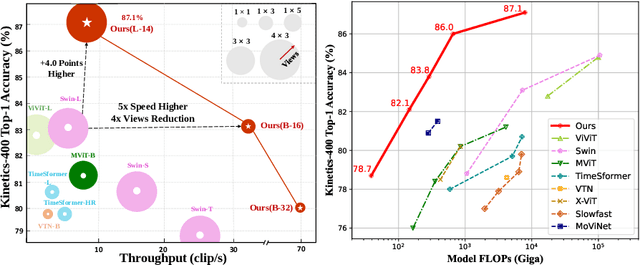
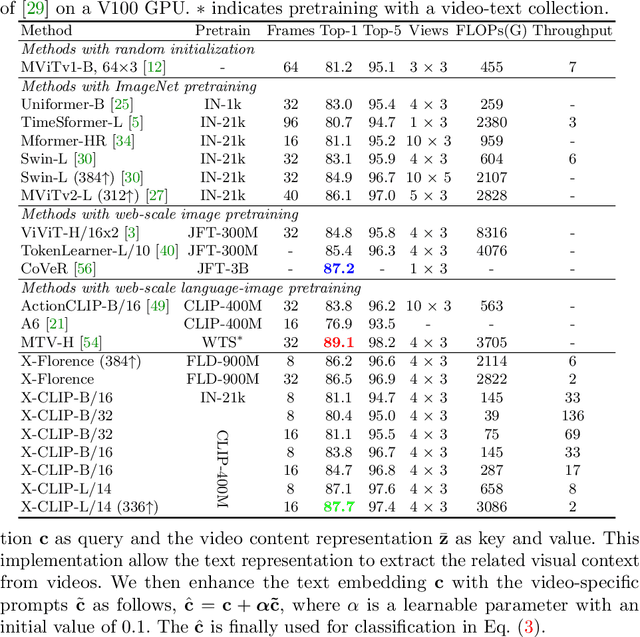
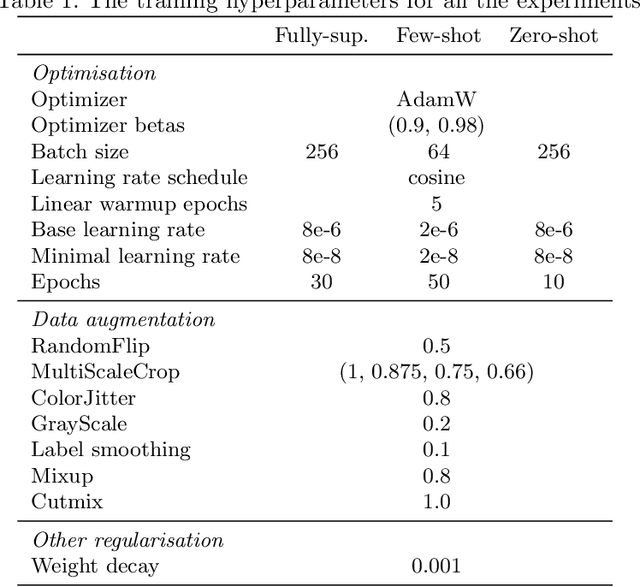
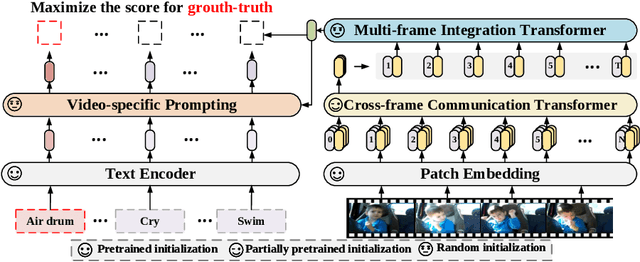
Abstract:Contrastive language-image pretraining has shown great success in learning visual-textual joint representation from web-scale data, demonstrating remarkable "zero-shot" generalization ability for various image tasks. However, how to effectively expand such new language-image pretraining methods to video domains is still an open problem. In this work, we present a simple yet effective approach that adapts the pretrained language-image models to video recognition directly, instead of pretraining a new model from scratch. More concretely, to capture the long-range dependencies of frames along the temporal dimension, we propose a cross-frame attention mechanism that explicitly exchanges information across frames. Such module is lightweight and can be plugged into pretrained language-image models seamlessly. Moreover, we propose a video-specific prompting scheme, which leverages video content information for generating discriminative textual prompts. Extensive experiments demonstrate that our approach is effective and can be generalized to different video recognition scenarios. In particular, under fully-supervised settings, our approach achieves a top-1 accuracy of 87.1% on Kinectics-400, while using 12 times fewer FLOPs compared with Swin-L and ViViT-H. In zero-shot experiments, our approach surpasses the current state-of-the-art methods by +7.6% and +14.9% in terms of top-1 accuracy under two popular protocols. In few-shot scenarios, our approach outperforms previous best methods by +32.1% and +23.1% when the labeled data is extremely limited. Code and models are available at https://aka.ms/X-CLIP
Prior Knowledge Guided Unsupervised Domain Adaptation
Jul 18, 2022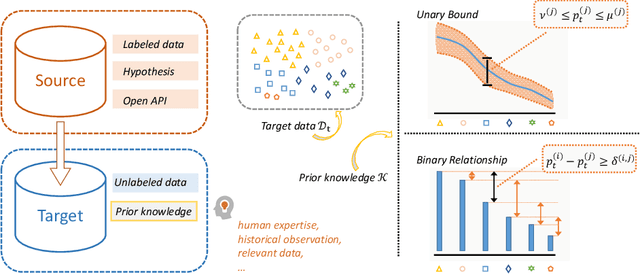

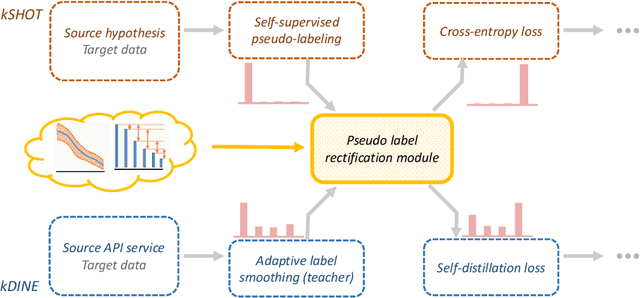
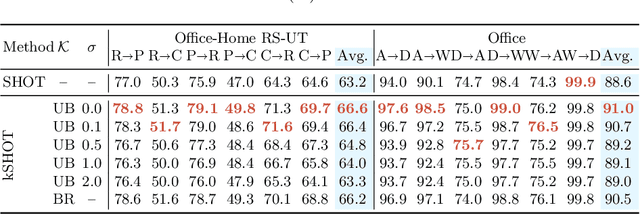
Abstract:The waive of labels in the target domain makes Unsupervised Domain Adaptation (UDA) an attractive technique in many real-world applications, though it also brings great challenges as model adaptation becomes harder without labeled target data. In this paper, we address this issue by seeking compensation from target domain prior knowledge, which is often (partially) available in practice, e.g., from human expertise. This leads to a novel yet practical setting where in addition to the training data, some prior knowledge about the target class distribution are available. We term the setting as Knowledge-guided Unsupervised Domain Adaptation (KUDA). In particular, we consider two specific types of prior knowledge about the class distribution in the target domain: Unary Bound that describes the lower and upper bounds of individual class probabilities, and Binary Relationship that describes the relations between two class probabilities. We propose a general rectification module that uses such prior knowledge to refine model generated pseudo labels. The module is formulated as a Zero-One Programming problem derived from the prior knowledge and a smooth regularizer. It can be easily plugged into self-training based UDA methods, and we combine it with two state-of-the-art methods, SHOT and DINE. Empirical results on four benchmarks confirm that the rectification module clearly improves the quality of pseudo labels, which in turn benefits the self-training stage. With the guidance from prior knowledge, the performances of both methods are substantially boosted. We expect our work to inspire further investigations in integrating prior knowledge in UDA. Code is available at https://github.com/tsun/KUDA.
Surgical Phase Recognition in Laparoscopic Cholecystectomy
Jun 14, 2022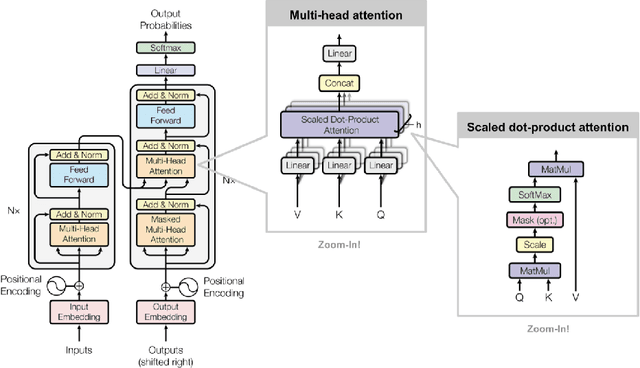
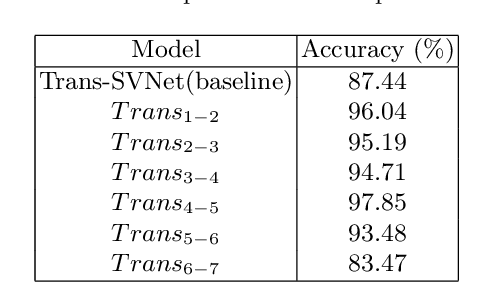
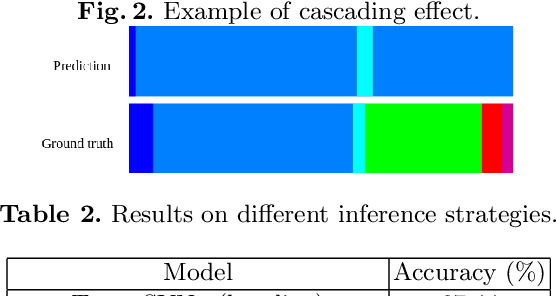
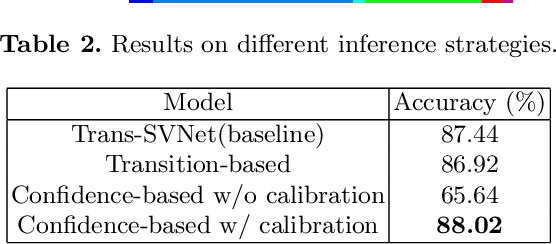
Abstract:Automatic recognition of surgical phases in surgical videos is a fundamental task in surgical workflow analysis. In this report, we propose a Transformer-based method that utilizes calibrated confidence scores for a 2-stage inference pipeline, which dynamically switches between a baseline model and a separately trained transition model depending on the calibrated confidence level. Our method outperforms the baseline model on the Cholec80 dataset, and can be applied to a variety of action segmentation methods.
Safe Self-Refinement for Transformer-based Domain Adaptation
Apr 16, 2022

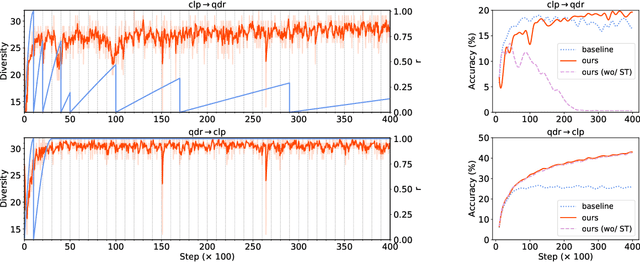
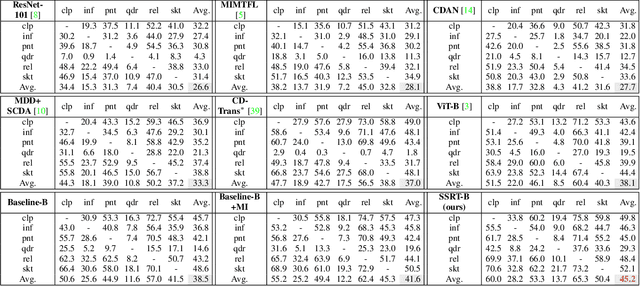
Abstract:Unsupervised Domain Adaptation (UDA) aims to leverage a label-rich source domain to solve tasks on a related unlabeled target domain. It is a challenging problem especially when a large domain gap lies between the source and target domains. In this paper we propose a novel solution named SSRT (Safe Self-Refinement for Transformer-based domain adaptation), which brings improvement from two aspects. First, encouraged by the success of vision transformers in various vision tasks, we arm SSRT with a transformer backbone. We find that the combination of vision transformer with simple adversarial adaptation surpasses best reported Convolutional Neural Network (CNN)-based results on the challenging DomainNet benchmark, showing its strong transferable feature representation. Second, to reduce the risk of model collapse and improve the effectiveness of knowledge transfer between domains with large gaps, we propose a Safe Self-Refinement strategy. Specifically, SSRT utilizes predictions of perturbed target domain data to refine the model. Since the model capacity of vision transformer is large and predictions in such challenging tasks can be noisy, a safe training mechanism is designed to adaptively adjust learning configuration. Extensive evaluations are conducted on several widely tested UDA benchmarks and SSRT achieves consistently the best performances, including 85.43% on Office-Home, 88.76% on VisDA-2017 and 45.2% on DomainNet.
Unsupervised Deep Learning Meets Chan-Vese Model
Apr 14, 2022

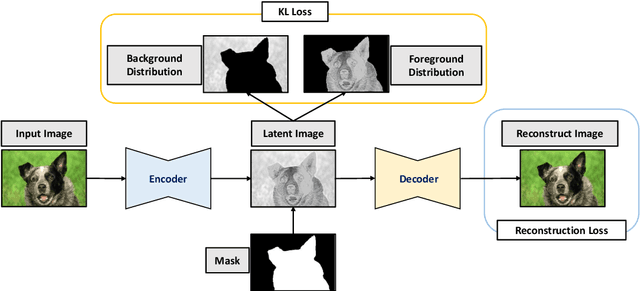
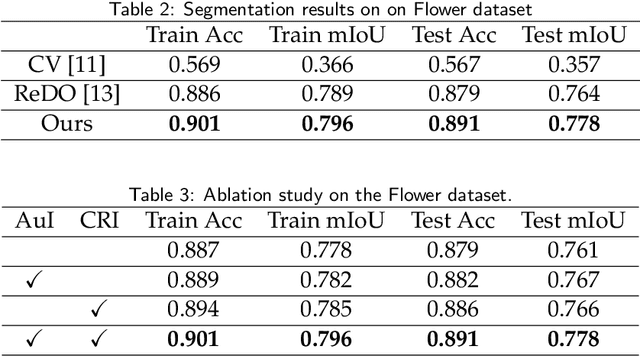
Abstract:The Chan-Vese (CV) model is a classic region-based method in image segmentation. However, its piecewise constant assumption does not always hold for practical applications. Many improvements have been proposed but the issue is still far from well solved. In this work, we propose an unsupervised image segmentation approach that integrates the CV model with deep neural networks, which significantly improves the original CV model's segmentation accuracy. Our basic idea is to apply a deep neural network that maps the image into a latent space to alleviate the violation of the piecewise constant assumption in image space. We formulate this idea under the classic Bayesian framework by approximating the likelihood with an evidence lower bound (ELBO) term while keeping the prior term in the CV model. Thus, our model only needs the input image itself and does not require pre-training from external datasets. Moreover, we extend the idea to multi-phase case and dataset based unsupervised image segmentation. Extensive experiments validate the effectiveness of our model and show that the proposed method is noticeably better than other unsupervised segmentation approaches.
 Add to Chrome
Add to Chrome Add to Firefox
Add to Firefox Add to Edge
Add to Edge